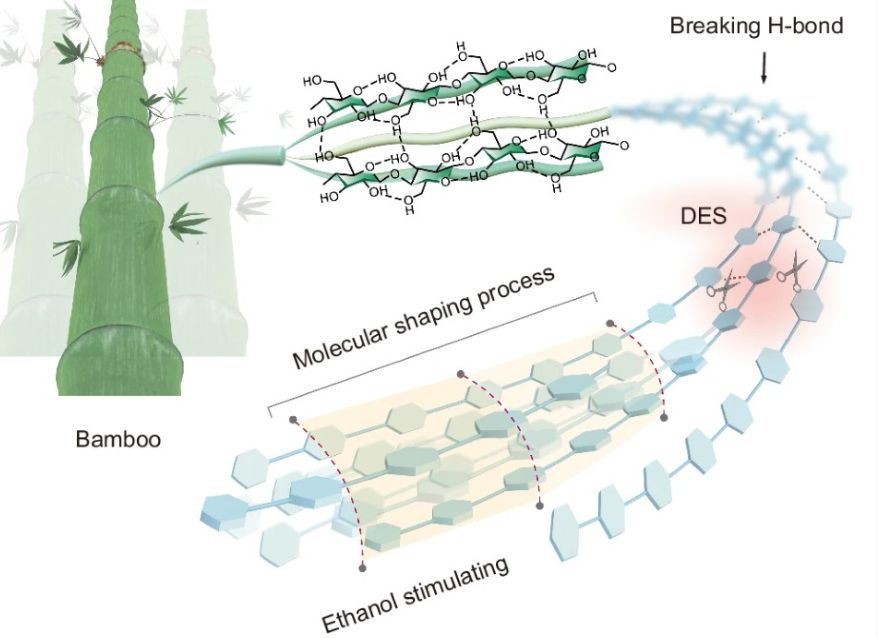Discover the Environmental Impact of Zero Waste Lifestyle
Imagine a world where trash bins are nearly empty, and the planet thrives because of it. That’s the vision behind the zero waste lifestyle. It’s all about rethinking how you consume and dispose of materials to ensure nothing goes to waste. Why does this matter? Because waste isn’t just about what you throw away—it’s about the resources used to create it. For every garbage can, industries use 87 cans’ worth of materials. Shocking, right?
By embracing zero waste, you help tackle major environmental challenges like pollution and resource depletion. Reducing waste cuts down harmful pollutants conserves water and energy, and keeps trash out of oceans and landfills. Plus, adopting these practices can significantly lower carbon footprints and protect biodiversity. It’s proof that small changes in your daily habits can lead to big environmental wins.
Understanding Zero Waste Lifestyle
What is Zero Waste?
Zero waste is more than a trendy term, it’s a lifestyle that aims to eliminate waste. Instead of tossing things into the trash, you focus on keeping materials in use for as long as possible. Thus, this means rethinking how you consume, reuse, and dispose of items. The ultimate goal? To send nothing to landfills or incinerators.
At its core, zero waste encourages you to view waste as a resource. For example, instead of throwing away food scraps, you can compost them to enrich the soil. Or, instead of buying single-use products, you can opt for reusable alternatives. It’s all about making intentional choices that reduce your environmental impact.
The Core Philosophy of Zero Waste
The philosophy behind zero waste is rooted in creating a sustainable and circular system. Moreover, it’s about designing products and processes that minimize waste from the start. Here’s a quick breakdown of its key components:
| Key Principle | Description |
|---|---|
| Redesigning Systems | Developing products and processes that minimize resource consumption and waste generation. |
| Resource Recovery | Prioritizing the reuse, repair, and recycling of materials to keep them circulating within the economy. |
| Responsible Consumption | Encouraging consumers to make mindful choices that reduce waste. |
| Policy and Community Engagement | Implementing policies and engaging communities to support waste reduction initiatives. |
This philosophy isn’t new. It draws inspiration from historical and cultural movements. For instance, Indigenous communities have long practiced sustainable living, treating the Earth with respect and care. Additionally, environmentalists like Ralph Waldo Emerson and Rachel Carson also championed the idea of protecting natural resources. Thus, their work laid the foundation for the zero waste movement we see today.
Why Zero Waste is Crucial for the Environment
Why should you care about zero waste? Because it’s a game-changer for the planet. Adopting this lifestyle helps tackle pressing environmental issues like pollution, resource depletion, and climate change. Here’s how:
- Reducing Waste: By cutting down on what you throw away, you help decrease the amount of trash in landfills. This reduces harmful emissions like methane, a potent greenhouse gas.
- Conserving Resources: Zero waste promotes the reuse and recycling of materials, which means fewer raw resources are extracted from the Earth.
- Protecting Ecosystems: Less waste means fewer pollutants entering rivers, oceans, and forests. This helps preserve biodiversity and supports healthy ecosystems.
Scientific studies back this up. For example, global goals aim to reduce municipal solid waste per capita by at least 15% by 2030. They also target a 50% reduction in waste sent to landfills and a 70% diversion rate through recycling and composting. Therefore, these numbers show that zero waste isn’t just good for the environment—it’s essential for sustainability.
As environmentalist Rachel Carson once said, In nature, nothing exists alone.
Henceforth, by embracing zero waste, you’re not just reducing waste—you’re contributing to a healthier, more sustainable world.
Principles of Zero Waste
The Zero Waste Hierarchy
The zero waste hierarchy is your roadmap to sustainable living. It’s a step-by-step guide that helps you rethink how you interact with materials and resources. Each step plays a vital role in reducing waste and protecting the environment.
Let’s break it down:
| Step | Contribution to Sustainability |
|---|---|
| Rethink / Redesign | Encourages designs that utilize reusable, recyclable, and compostable materials, promoting a closed-loop system. |
| Reduce | Aims to minimize resource use and toxicity, ensuring basic needs are met while reducing environmental impact. |
| Reuse | Focuses on maximizing product lifespan and usage frequency through maintenance and repurposing. |
| Recycle / Compost | Involves reprocessing materials and returning organic waste to the soil, reducing landfill dependency. |
| Material Recovery | Processes unusable products to recover materials, minimizing waste and promoting recycling. |
| Residuals Management | Seeks to minimize waste through redesign and recycling of hazardous gases. |
| Unacceptable | Advocates against harmful waste management practices that negatively impact health and the environment. |
Rethink
Start by rethinking your habits. Ask yourself, “Do I need this?” or “Is there a better way to use this item?” Therefore, this step encourages you to challenge the traditional take-make-dispose model. For example, choose products designed with reusable or recyclable materials. By rethinking, you help create a circular economy where resources stay in use longer.
Reduce
Reducing is all about cutting back. Use only what you need and avoid overconsumption. For instance, buy in bulk to minimize packaging or opt for digital receipts instead of paper ones. Subsequently, small changes like these can lead to significant waste reduction over time.
Reuse
Reusing is where creativity shines. Instead of discarding items, find ways to give them a second life. Turn old jars into storage containers or repurpose worn-out clothes into cleaning rags. Furthermore, reusing not only saves money but also reduces the demand for new products.
Recycle
Recycling is a familiar concept, but it’s more effective when done right. Sort your recyclables properly and ensure they’re clean. Recycling helps recover valuable materials, reducing the need for raw resource extraction. It’s a simple yet impactful way to support the zero waste lifestyle.
Rot (Composting)
Composting is nature’s way of recycling. Turn your food scraps and yard waste into nutrient-rich compost for your garden. This step keeps organic waste out of landfills, where it would otherwise produce harmful methane gas. Plus, it enriches the soil and supports healthy ecosystems.
Environmental Benefits of Zero Waste
Reducing Resource Extraction and Pollution
When you embrace zero waste, you help reduce the need for resource extraction, which is a major driver of environmental damage. Mining, logging, and drilling often destroy habitats and release harmful pollutants into the air and water. Altogether, by reusing and recycling materials, you can cut down on these destructive practices.
For example, recycling just one ton of aluminum saves 2.7 tons of solid waste from mining. That’s a huge win for the planet! Plus, recycling and composting in the U.S. saved over 1.1 quadrillion BTU of energy in 2014. This shows how small actions, like sorting your recyclables, can lead to big environmental benefits.
Here’s a quick look at how reducing resource extraction helps:
| Benefit | Evidence |
|---|---|
| Resource Conservation | A zero waste system helps us live within our planet’s means by using resources more efficiently. |
| Pollution Reduction | Recycling 1 ton of aluminum reduces 2.7 tons of solid waste related to mining and extraction. |
| Energy Savings | Recycling and composting in the U.S. saved over 1.1 quadrillion BTU of energy in 2014. |
| Water Conservation | Recycling 1 ton of paper saves 7,000 gallons of water. |
| Ecosystem Support | Nearly 90% of biodiversity loss is caused by resource extraction and processing. |
By reducing waste, you’re not just cutting down on trash—you’re actively protecting the planet from harmful greenhouse gas emissions and pollution.
Lowering Energy and Water Usage
Did you know that zero waste practices can save massive amounts of energy and water? Recycling and reusing materials require far less energy than producing new ones. For instance, using recycled materials can reduce energy use by 30% to 90% compared to raw materials. That’s a game-changer for reducing your environmental impact.
Water savings are just as impressive. Recycling one ton of paper saves 7,000 gallons of water. Composting also plays a role by improving soil’s water retention, which reduces the need for irrigation. Plus, when you prevent food waste, you’re saving the 21% of U.S. agricultural water that goes into growing food that’s never eaten.
Here’s why this matters:
- Recycling and remanufacturing saved over 1.1 quadrillion BTU of energy in 2014.
- Composting improves water retention and reduces irrigation demands.
- Nearly 90% of biodiversity loss and water stress comes from resource extraction and processing.
By lowering energy and water usage, you’re helping to preserve these vital resources for future generations.
Supporting Ecosystems and Biodiversity
Healthy ecosystems are the backbone of life on Earth. They provide essential services like clean air, water, and fertile soil. But resource extraction and waste mismanagement threaten these ecosystems. Nearly 90% of biodiversity loss is linked to resource extraction and processing. That’s where zero waste comes in.
When you adopt zero waste practices, you reduce the need for resource extraction, which helps protect habitats and species. Additionally, effective waste management also keeps harmful pollutants, like plastics and excess nutrients, out of rivers and oceans. This creates healthier environments for wildlife and humans alike.
| Benefit | Description |
|---|---|
| Keeping waste-related risks at bay | Reduces pollution types harmful to biodiversity, such as excess nutrients and plastics. |
| Protecting green and blue spaces | Enhances urban green spaces, allowing them to support biodiversity and human well-being. |
| Letting nature catch its breath | Promotes sustainable consumption, preserving natural resources and habitats. |
Healthy ecosystems provide services valued at over $125 trillion annually. Certainly, by reducing waste, you’re not just helping the environment—you’re also contributing to a thriving economy.
The Earth is what we all have in common – Wendell Berry
Your actions matter. By living a zero waste lifestyle, you’re playing a key role in preserving the planet’s biodiversity and ensuring a sustainable future.
Combating Climate Change
When you think about climate change, you might picture melting glaciers or rising sea levels. But did you know that your trash bin plays a role too? Thus, the way we manage waste has a direct impact on the planet’s climate. That’s where the zero waste lifestyle steps in as a powerful tool to combat climate change.
Every time you recycle, compost, or reduce waste, you’re helping to cut down on greenhouse gas emissions. For example, recycling just one ton of materials can save an average of three tons of carbon emissions. Composting your food scraps does even more. It prevents methane—a greenhouse gas 25 times more potent than carbon dioxide—from forming in landfills. Plus, composting enriches the soil, allowing it to absorb more carbon from the atmosphere.
Here’s how zero waste strategies make a difference:
- They could reduce greenhouse gas emissions by over 400 million metric tons of CO2 per year by 2030. That’s like shutting down more than 80 coal-fired power plants in the U.S.
- Recycling and reusing materials save energy. Using recycled materials requires less energy than producing new ones, which means fewer fossil fuels burned.
- Composting organic waste not only reduces emissions but also improves soil health, creating a natural carbon sink.
By adopting zero waste practices, you’re not just reducing trash. You’re actively fighting climate change. Imagine the impact if everyone made these small changes. Together, we could create a ripple effect that transforms the planet.
As environmentalist Bill McKibben once said, the technology we need most badly is the technology of community, the knowledge about how to cooperate to get things done.
Your actions inspire others. When you choose to live a zero waste lifestyle, you’re showing the world that change is possible.
So, what can you do today? Start small. Recycle properly, compost your food scraps, and rethink your purchases. Eventually, every step you take brings us closer to a healthier, more sustainable planet.
Real-World Applications of Zero Waste
Zero Waste Communities
Kamikatsu, Japan
Kamikatsu, a small town in Japan, has become a global symbol of the zero waste movement. The town implemented strict recycling and waste separation rules, requiring residents to sort their waste into 45 categories. This effort has paid off. By 2020, Kamikatsu achieved an impressive 81% recycling rate, far exceeding Japan’s national average of 20%.
What’s even more inspiring? Kamikatsu reduced its incineration costs by one-third and generates up to three million yen annually by selling recycled materials. These funds significantly contribute to the town’s waste management budget. Hence, kamikatsu’s success shows that community commitment and innovative recycling systems can make a huge difference.
How to Begin Your Zero Waste Journey
Start by avoiding overpackaged products and bringing your reusable shopping bags and cups. Similarly, sorting and recycling waste properly also ensures materials are processed correctly.
Here are some practical tips you can try today:
- Refuse: Say no to single-use plastics and excess packaging.
- Reduce: Be intentional about what you buy. Focus on quality over quantity.
- Reuse: Repair or repurpose items instead of throwing them away.
- Recycle: Use recycling as a last resort for materials that can’t be reused.
- Rot (Compost): Turn food scraps into nutrient-rich compost for your garden.
Want to go further? Replace paper towels with cloth ones, or invest in reusable items like stainless steel water bottles. Composting organic waste is another great way to reduce landfill waste while enriching the soil. Therefore, every small step you take brings us closer to a sustainable future.
We do not inherit the Earth from our ancestors; we borrow it from our children – Native American Proverb
Creating a zero waste community starts with you. When you take action, others notice and often join in. Here’s how you can build momentum in your neighborhood:
- Firstly, develop a zero waste strategic plan to guide local efforts.
- Engage residents, schools, and businesses in discussions about waste reduction.
- Host workshops to teach practical skills like composting or upcycling.
- Set up comprehensive recycling and composting programs.
- Encourage reuse and repair initiatives, such as swap events or repair cafes.
By adopting these practices, you’re not just reducing waste—you’re joining a global movement to protect our planet.
Conclusion
Living a zero waste lifestyle benefits both you and the planet. By reducing waste, you conserve resources, lower pollution, and protect ecosystems. Small changes, like refusing single-use plastics or composting food scraps, can lead to big environmental wins. Whenever you take action, you inspire others to join in, amplifying the impact through collective efforts like community cleanups or compost programs.
Ready to start? Moreover, shop with reusable containers, say no to unnecessary items, and reuse what you already have. Every step you take helps create a cleaner, more sustainable future.
FAQ’s
1. Is zero waste living more expensive?
Not necessarily. In many cases, adopting zero waste habits like buying in bulk and choosing reusable options can save money in the long run.
2. How can I start a zero waste lifestyle in a small town or rural area?
Focus on what you can control, such as reducing your use of single-use plastics and supporting local, sustainable businesses. Hence, every action counts, regardless of where you live.
3. Can I make a difference as just one person following a zero waste lifestyle?
Absolutely. Each person’s efforts add up, creating a ripple effect that can inspire others and lead to larger environmental benefits.
4. What do I do if I don’t have access to bulk stores?
Focus on reducing waste in other areas, such as opting for package-free produce, bringing your own bags, and choosing products with recyclable packaging.
5. How do I deal with waste when traveling?
Plan ahead by packing reusable essentials like water bottles, utensils, and shopping bags. Therefore, choose accommodations and activities that align with your sustainable values.
References
- Bogusz, M., Matysik-Pejas, R., Krasnodębski, A., & Dziekański, P. (2021). The concept of zero waste in the context of supporting environmental protection by consumers. Energies, 14(18), 5964. https://doi.org/10.3390/en14185964
- Awasthi, A. K., Cheela, V. S., D’Adamo, I., Iacovidou, E., Islam, M. R., Johnson, M., Miller, T. R., Parajuly, K., Parchomenko, A., Radhakrishan, L., Zhao, M., Zhang, C., & Li, J. (2021). Zero waste approach towards a sustainable waste management. Resources Environment and Sustainability, 3, 100014. https://doi.org/10.1016/j.resenv.2021.100014
- Săplăcan, Z., & Márton, B. (2019). Determinants of adopting a zero waste consumer lifestyle. Regional and Business Studies, 11(2). https://doi.org/10.33568/rbs.2410
- Pietzsch, N., Ribeiro, J. L. D., & De Medeiros, J. F. (2017b). Benefits, challenges and critical factors of success for Zero Waste: A systematic literature review. Waste Management, 67, 324–353. https://doi.org/10.1016/j.wasman.2017.05.004
Additionally, to stay updated with the latest developments in STEM research, visit ENTECH Online. Basically, this is our digital magazine for science, technology, engineering, and mathematics. Furthermore, at ENTECH Online, you’ll find a wealth of information.




I like the concept very useful for environment conservation.
Thanks for your comment, keep visiting entechonline.com for more articles related to your interests.